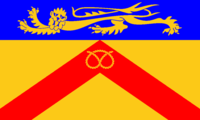Please tell us which country and city you'd like to see the weather in.
Coordinates: 52°55′27″N 2°21′19″W / 52.9243°N 2.3553°W
| Ashley | |
|
|
|
| Population | 508 (2001 Census) |
|---|---|
| OS grid reference | SJ762363 |
| District | Newcastle-under-Lyme |
| Shire county | Staffordshire |
| Region | West Midlands |
| Country | England |
| Sovereign state | United Kingdom |
| Post town | Near Market Drayton |
| Postcode district | TF9 |
| Dialling code | 01630 |
| Police | Staffordshire |
| Fire | Staffordshire |
| Ambulance | West Midlands |
| EU Parliament | West Midlands |
| UK Parliament | Stone |
| List of places: UK • England • Staffordshire | |
Ashley is a village and former civil parish in the Borough of Newcastle-under-Lyme of Staffordshire, England. According to the 2001 census it had a population of 508. The village is close to the border of Shropshire, adjacent to Loggerheads, and is 4 miles (6 km) west north west of Market Drayton.
History [link]
The name means "the forest clearing by the ash tree" the old village is in evidence in the lanes of Hookgate, Ashley Dale and Jugbank. Mainly sandstone cottages now mixed in with modern housing. From medieval times men have indiscriminately hacked clearings in the forests. Then linked them with tracks and lanes following no specific pattern.
The church of St John the Baptist possess a 17th century tower with the remainder built in 1860-62 by J. Ashdown of London in a style representative of the13th-14th century. The church is on a raised mound which would leave one to think originally of Saxon or pre-Christian times. It is worth a visit for the spectacular tomb of Sir Gilbert Gerard (d. 1592) and his wife (d. 1608). Near to the church is a mound as yet unexcavated but thought to a burial ground from the time of the Black Death.
The Roman Catholic chapel of Our Lady and St John a rather unimposing building not far from St John the Baptist. The church and rectory are just one building with a hint of gothic-like adornments an a colour washed stucco.
References [link]
| This section is empty. You can help by adding to it. |
External links [link]
| Wikimedia Commons has media related to: Ashley, Staffordshire |
https://wn.com/Ashley,_Staffordshire

Staffordshire
Staffordshire (/ˈstæfədʃɪər/ or /ˈstæfədʃə/; abbreviated Staffs) is a landlocked county in the West Midlands of England. The Cannock Chase AONB is situated within the county and also parts of the National Forest, as well as areas of the Peak District national park. It adjoins Cheshire to the north west, Derbyshire and Leicestershire to the east, Warwickshire to the south east, West Midlands and Worcestershire to the south and Shropshire to the west.
The largest city in Staffordshire is Stoke-on-Trent, which is administered separately from the rest of the county as an independent unitary authority. Lichfield also has city status, although this is a considerably smaller cathedral city. Major towns include Stafford (the county town), Burton upon Trent, Cannock, Newcastle-under-Lyme, Leek and Tamworth.
Wolverhampton, Walsall, West Bromwich and Smethwick were historic Staffordshire towns until local government reorganisation created the West Midlands county in 1974.
Apart from Stoke-on-Trent, Staffordshire is divided into the districts of Cannock Chase, East Staffordshire, Lichfield, Newcastle-under-Lyme, South Staffordshire, Stafford, Staffordshire Moorlands, and Tamworth.
Staffordshire (UK Parliament constituency)
Staffordshire was a county constituency of the House of Commons of the Parliament of England then of the Parliament of Great Britain from 1707 to 1800 and of the Parliament of the United Kingdom from 1801 to 1832. It was represented by two Members of Parliament until 1832.
History
Boundaries and franchise
The constituency, which first returned members to Parliament in 1290, consisted of the historic county of Staffordshire, excluding the city of Lichfield which had the status of a county in itself after 1556. (Although Staffordshire also contained the boroughs of Stafford and Newcastle-under-Lyme, and part of the borough of Tamworth, each of which elected two MPs in its own right for part of the period when Staffordshire was a constituency, these were not excluded from the county constituency, and owning property within the borough could confer a vote at the county election. This was not the case, though, for Lichfield.)
As in other county constituencies the franchise between 1430 and 1832 was defined by the Forty Shilling Freeholder Act, which gave the right to vote to every man who possessed freehold property within the county valued at £2 or more per year for the purposes of land tax; it was not necessary for the freeholder to occupy his land, nor even in later years to be resident in the county at all.


